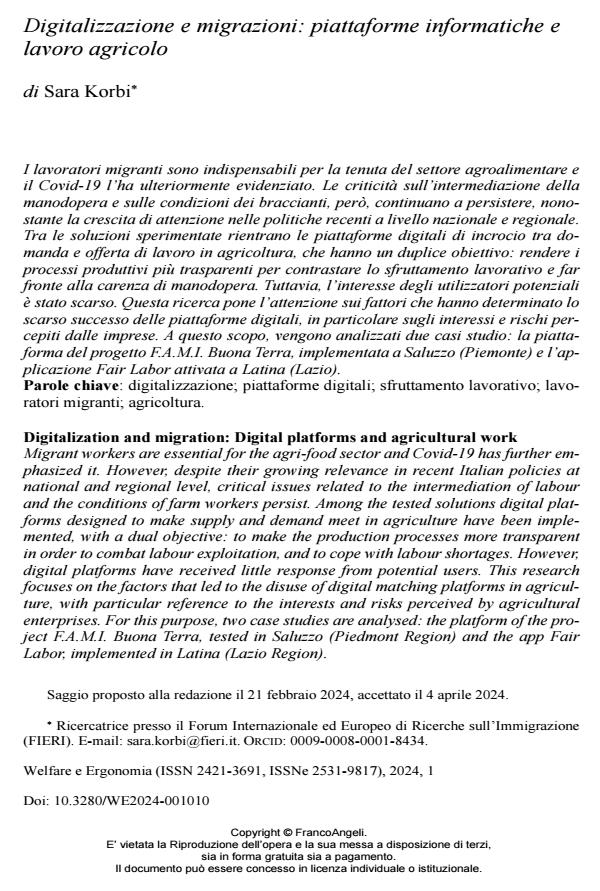Digitalization and migration: Digital platforms and agricultural work
Journal title WELFARE E ERGONOMIA
Author/s Sara Korbi
Publishing Year 2024 Issue 2024/1
Language Italian Pages 11 P. 137-147 File size 225 KB
DOI 10.3280/WE2024-001010
DOI is like a bar code for intellectual property: to have more infomation
click here
Below, you can see the article first page
If you want to buy this article in PDF format, you can do it, following the instructions to buy download credits

FrancoAngeli is member of Publishers International Linking Association, Inc (PILA), a not-for-profit association which run the CrossRef service enabling links to and from online scholarly content.
Migrant workers are essential for the agri-food sector and Covid-19 has further emphasized it. However, despite their growing relevance in recent Italian policies at national and regional level, critical issues related to the intermediation of la-bour and the conditions of farm workers persist. Among the tested solutions digi-tal platforms designed to make supply and demand meet in agriculture have been implemented, with a dual objective: to make the production processes more trans-parent in order to combat labour exploitation, and to cope with labour shortages. However, digital platforms have received little response from potential users. This research focuses on the factors that led to the disuse of digital matching plat-forms in agriculture, with particular reference to the interests and risks perceived by agricultural enterprises. For this purpose, two case studies are analysed: the platform of the project F.A.M.I. Buona Terra, tested in Saluzzo (Piedmont Region) and the app Fair Labor, implemented in Latina (Lazio Region).
Keywords: digitalization; digital platforms; labour exploitation; migrant workers; agriculture.
Sara Korbi, Digitalizzazione e migrazioni: piattaforme informatiche e lavoro agricolo in "WELFARE E ERGONOMIA" 1/2024, pp 137-147, DOI: 10.3280/WE2024-001010